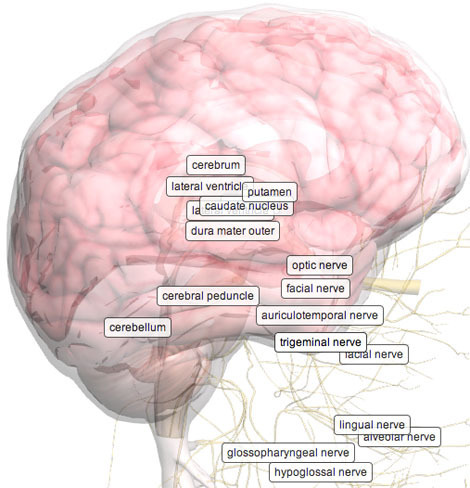Derren Brown's Blog, page 53
December 21, 2010
China bans English words in media
China has banned newspapers, publishers and website-owners from using foreign words – particularly English ones. China's state press and publishing body said such words were sullying the purity of the Chinese language. It said standardised Chinese should be the norm: the press should avoid foreign abbreviations and acronyms, as well as "Chinglish" – which is a mix of English and Chinese.
The order also extends existing warnings that applied to radio and TV. China's General Administration of Press and Publication said that with economic and social development, foreign languages were increasingly being used in all types of publications in China. It said such use had "seriously damaged" the purity of the Chinese language and resulted in "adverse social impacts" on the cultural environment, reported the People's Daily newspaper.
If words must be written in a foreign language, an explanation in Chinese is required, the state body said.
Ukraine to open Chernobyl area to tourists in 2011
[image error]
"Want a better understanding of the world's worst nuclear disaster? Come tour the Chernobyl nuclear power plant. Beginning next year, Ukraine plans to open up the sealed zone around the Chernobyl reactor to visitors who wish to learn more about the tragedy that occurred nearly a quarter of a century ago, the Emergency Situations Ministry said Monday.
Chernobyl's reactor No. 4 exploded on April 26, 1986, spewing radiation over a large swath of northern Europe. Hundreds of thousands of people were resettled from areas contaminated with radiation fallout in Ukraine, Belarus and Russia. Related health problems still persist. The so-called exclusion zone, a highly contaminated area within a 30-mile (48-kilometer) radius of the exploded reactor, was evacuated and sealed off in the aftermath of the explosion. All visits were prohibited.
Today, about 2,500 employees maintain the remains of the now-closed nuclear plant, working in shifts to minimize their exposure to radiation. Several hundred evacuees have returned to their villages in the area despite a government ban. A few firms now offer tours to the restricted area, but the government says those tours are illegal and their safety is not guaranteed.
Emergency Situations Ministry spokeswoman Yulia Yershova said experts are developing travel routes that will be both medically safe and informative for Ukrainians as well as foreign visitors. She did not give an exact date when the tours were expected to begin."
Read more at NC Times
Fly Geyser – Not Quite Of This World

"They look as if they were taken on another planet, or at least on the set of a new and very expensive science fiction movie. Yet these pictures are of the Fly Geyser which is very much of planet earth (Nevada, US to be exact). However – and herein lies the surprise – it is effectively man made.
The geyser can be found in Hualapai Valley near Gerlach. It is a little seen phenomenon as the land upon which it sits is private. It can be seen from State Road 34 but unless you have permission the view from a distance is all you should attempt.
Back in 1916 the owners of the place were looking for water in the hope of creating rich farmland in this desert area of the state. They came across water, yes, and the well worked for decades. However, the drill that was driven down a shaft hit a geothermal pocket of water and the result was a geyser, if not quite made by man then certainly made possible by him.
Yet it is not the geyser you see in the pictures here. In the 1960s the water found another weak spot and a new, natural geyser was created. The older one no longer spouts at all. It is thought that the new geyser somehow diverted its water. Or perhaps it simply waits for another time to come when it can spring in to life again."
Read more and see further photos at Kuriositas
Nasa captures stunning images of the far side of the moon

"These amazing pictures capture the moon's cratered surface in the most intricate detail ever recorded.
The images, which were taken by NASA's Lunar Reconaissance Orbiter (LRO), have boosted the resolution of images of the far side of the moon over 100 times.
Digital elevation and terrain maps based on the new data reveal the heavily cratered and bumpy surface of the moon in all its complexity.
Dr Gregory Neumann of NASA'S Goddard Space Flight Center in Greenbelt, Maryland, said that digital elevation and terrain maps based on the new data 'will be a fundamental reference for future scientific and human exploration missions to the moon.' The brilliant, iridescent green concepts, pictured here, show the topography of different hemispheres of the moon.
Dr Neumann said: 'After about one year taking data, we already have nearly 3 billion data points from the Lunar Orbiter Laser Altimeter on board the LRO spacecraft.
'We expect to continue to make measurements at this rate through the next two years of the science phase of the mission and beyond. Near the poles, we expect to provide near-GPS-like navigational capability as coverage is denser due to the spacecraft's polar orbit.'"
Read more at The Daily Mail
December 20, 2010
Indian Man Marries and Then Sells 60 Wives To Brothels
In Darjeeling, a mountainous tea-growing district of the eastern state of West Bengal, a 27 year-old man has been arrested for duping 60 women into marrying him and then selling them into prostitution.
Bikky Biswarkarma pretended to be a well paid army officer home on holiday when over a five year period, he married at least 60 girls and then sold them to brothels in Mumbai and Pune, cities in the western state of Maharastra, for 70,000-100,000 rupees ($1,500-$2,000).
"He used to pose as an army man on leave who…wanted to get married before returning to work. He would change bases frequently to lure girls from poor families in tea gardens and villages," said district police chief, Debendra Prasad Singh.
It was difficult for the police to take action in this case because there were few if any complaints issued by the families of the girls who never knew they had been sold to brothels.
Scientists find the sleep switch inside our brains

Researchers have discovered the mechanism that causes the brain to switch from being awake to sleeping, according to a study from Washington State University. The analysis is expected to help scientists focus on finding ways to develop new sleep aids and even treatments for strokes and brain injuries.
"We know that brain activity is linked to sleep, but we've never known how," said James Krueger, WSU neuroscientist and lead author of a paper in the latest edition of the Journal of Applied Physiology. "This gives us a mechanism to link brain activity to sleep. This has not been done before."
In an interview with Postmedia News, Krueger said the way we sleep goes against what science believed previously. "Our work also emphasizes that sleep begins as a local process driven by cell activity." Krueger said the view is in contrast to the current sleep research that views sleep as being imposed upon the brain by sleep regulatory circuits.
"The problem with that view is that despite millions of cases of stroke (brain damage) or intentional lesions to those circuits, a sleepless human or animal has yet to be described (with exception of patients in a coma, which is neither a wake nor sleep state)," he said.
The researchers documented how ATP (adenosine triphosphate), the fundamental energy currency of cells, is released by active brain cells to start the molecular events leading to sleep. The ATP then binds to a receptor responsible for cell processing and the release of cytokines, small signalling proteins involved in sleep regulation.
Read more: Montreal Gazette
Four in 10 Americans Believe in Strict Creationism
Belief in evolutionary origins of humans slowly rising, however.
Four in 10 Americans, slightly fewer today than in years past, believe God created humans in their present form about 10,000 years ago. Thirty-eight percent believe God guided a process by which humans developed over millions of years from less advanced life forms, while 16%, up slightly from years past, believe humans developed over millions of years, without God's involvement.

A small minority of Americans hold the "secular evolution" view that humans evolved with no influence from God — but the number has risen from 9% in 1982 to 16% today. At the same time, the 40% of Americans who hold the "creationist" view that God created humans as is 10,000 years ago is the lowest in Gallup's history of asking this question, and down from a high point of 47% in 1993 and 1999. There has been little change over the years in the percentage holding the "theistic evolution" view that humans evolved under God's guidance.
Americans' views on human origins vary significantly by level of education and religiosity. Those who are less educated are more likely to hold a creationist view. Those with college degrees and postgraduate education are more likely to hold one of the two viewpoints involving evolution.
Read more at Gallup
Reddit launches Astrobiology section

If you consider yourself an avid internet user then you'll know Reddit. If not you'd better start finding out. The wonderful site that gives us glorious news in a spectrum of topics now has an astrobiology section. How marvellous.
December 18, 2010
Does sleep increase creativity?

"Sleep is making memories stronger," says Jessica D. Payne of the University of Notre Dame, who co-wrote the review with Elizabeth A. Kensinger of Boston College. "It also seems to be doing something which I think is so much more interesting, and that is reorganizing and restructuring memories."
Payne and Kensinger study what happens to memories during sleep, and they have found that a person tends to hang on to the most emotional part of a memory. For example, if someone is shown a scene with an emotional object, such as a wrecked car, in the foreground, they're more likely to remember the emotional object than, say, the palm trees in the background — particularly if they're tested after a night of sleep. They have also measured brain activity during sleep and found that regions of the brain involved with emotion and memory consolidation are active.
"In our fast-paced society, one of the first things to go is our sleep," Payne says. "I think that's based on a profound misunderstanding that the sleeping brain isn't doing anything." The brain is busy. It's not just consolidating memories, it's organizing them and picking out the most salient information. She thinks this is what makes it possible for people to come up with creative, new ideas.
Full article at Science Daily
December 17, 2010
Google's Body Browser is a Google Earth for Human Physiology

Google has mapped just about every traffic artery you could ever want to locate on Google Maps, but what if the thruway you're looking for isn't on any road atlas? To help you tell your axillary artery from your common carotid, Google has created a G-Maps-like search-able guide for the human body that lets you zoom, scroll, and search for every muscle, gland, nerve, bone, or organ in our common physiology.
As far as handy Web apps go, Body Browser is pretty neat; a sliding scroll bar allows you to peel away layers of the body, starting at the skin and moving down through the muscles and bone/organs to the cardiovascular and nervous systems. It allows you to zoom in tight (with nice resolution) to get the name of a specific bodily bit. Clicking on anything produces a handy label that identifies what you're looking at.
More at Pop Sci
Go to Body Bowser Here (Update – not working for some but keep checking)
Derren Brown's Blog
- Derren Brown's profile
- 797 followers



